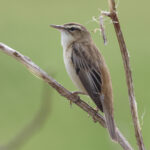Day 2 of a weekend of Autumn Tours today. It was cloudy all day, and although it was spitting with rain first thing (which wasn’t forecast!), thankfully the rain quickly stopped and it even brightened up a little bit.
As we drove west along the coast road, there were lots of geese in the stubble fields beyond Holkham. We slowed down and could see they were mostly Greylags, with a good number of Pink-footed Geese in with them as well as several Egyptian Geese too.
Our first destination for the morning was Titchwell. As it was still fairly quiet when we arrived in the car park, we headed round to take a look in the bushes in the oevrflow car park first. As well as the usual Dunnocks and Robins, we heard a Blackcap calling in the apple trees as we rounded the corner, just in time to see it drop down into the brambles. There were several Blackbirds in the trees, very active, suggesting they had just arrived. A couple of Redwings flew over calling, as did a Grey Wagtail. There were clearly birds on the move and newly arrived in from the continent this morning.
The feeders around the visitor centre held the usual selection of finches and tits, so we made our way straight out to Fen Trail. We were hoping to track down the Yellow-browed Warbler which has probably been here for some time now, but the sallows were fairly quiet. More Redwings were calling from the trees.
There were quite a few ducks on Patsy’s reedbed, particularly several each of Common Pochard and Tufted Duck, both of which were new additions for the weekend’s list. There were a few gulls too, loafing and preening, mostly Black-headed Gulls with a couple of Lesser Black-backed Gulls too. A larger gull at the back of them had a distinctive grey mantle, not as dark as the slaty-backed Lesser Black-backed Gulls but noticeably darker than the Black-headed Gulls. It was also noticeably pale headed, with limited fine streaking. It was a Yellow-legged Gull, but unfortunately it remained in the deeper water where we couldn’t see its bright yellow legs properly.
Scanning over the reedbed and beyond, we noticed a large heron-like bird flying in from the direction of Brancaster. It was a Bittern and thankfully it kept coming, flying right across in front of us over the reeds at the back of Patsy’s before dropping down somewhere out in front of Fen Hide the other side. A great way to start the morning, with a Bittern!
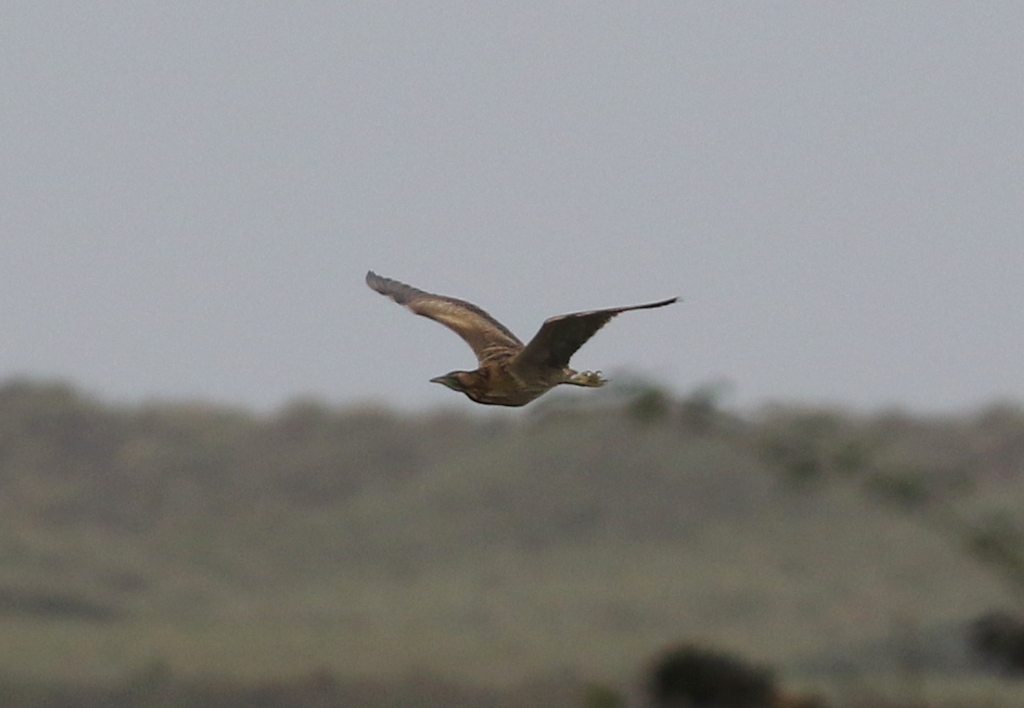 Bittern – flew in from Brancaster & dropped down in front of Fen Hide
Bittern – flew in from Brancaster & dropped down in front of Fen Hide
Continuing on along the East Trail, there were more birds migrating overhead. Two more Grey Wagtails flew high over calling, as did a flock of Linnets. A couple of groups of Siskins flew out of the wood ahead of us and circled up calling, before flying off west, presumably fresh arrivals from the continent. A Sparrowhawk came out of the trees and flew away across the paddocks, that one presumably a local bird.
There were lots of thrushes in the hedges which flew out as we walked along, presumably birds freshly arrived from the continent which had stopped off to feed. As well as more Redwings, we flushed several Song Thrushes, and four Mistle Thrushes flew past us along the line of the hedge, heading purposefully west. When we got to Willow Wood, there were lots of Blackbirds in the trees and feeding down on the edge of the reeds. At one point we thought we heard a harsher ‘tchacking’ call from the trees, which sounded a bit like a Ring Ouzel. But when we stopped to listen properly, it had gone quiet.
At that point we were distracted. There has been a Little Owl around here for the last couple of weeks, and we heard it calling from somewhere over around the paddocks. We walked back to try to see it. It was not on the fence at the back of the paddocks, but as we scanned along the other side of the big hedge, we just noticed a small patch of grey brown hidden in amongst the leaves. When we got it in the scope, we could confirm it was indeed the Little Owl.
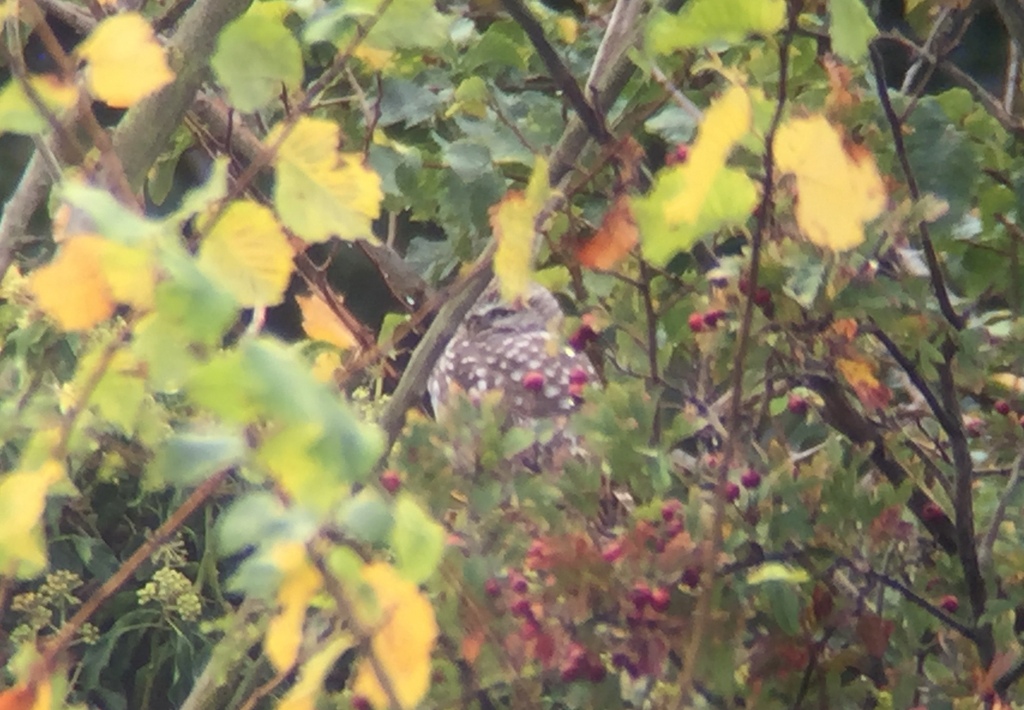 Little Owl – half hidden in the top of the hedge
Little Owl – half hidden in the top of the hedge
It was hard enough to see, even when you knew where it was, but eventually we all got a good look at the Little Owl. While we were standing there watching it, a blackbird-like shape flew up from the edge of the wood and into the top of an oak tree. It stayed there just long enough to get a quick look at it. It was the Ring Ouzel – we could see the distinctive pale edges to the wing feathers forming a pale panel, although it was a young one, a first winter, lacking a well-marked pale gorget. Then it dropped out of the tree, flew across in front of us and disappeared into the hedge.
We couldn’t see the Ring Ouzel again in the hedge, so we made our way on around Autumn Trail to the back corner of the freshmarsh. With the tide high, this is the place where the Spotted Redshanks like to roost and we immediately located a line of six of them there today. They were with four Greenshanks, but the Spotted Redshanks were all asleep, making them harder to separate. One Spotted Redshank did wake up briefly, just long enough for us to see its long, needle-fine-tipped bill.
 Little Stint – this juvenile was feeding in the back corner of the freshmarsh
Little Stint – this juvenile was feeding in the back corner of the freshmarsh
Down on the mud in the near corner, a single Little Stint was feeding. It was nice and close so we could get a good look at it. There were supposed to be two here today, but they were obviously not on speaking terms! There was a lone juvenile Ruff too. A Water Rail squealed from deep in the reeds and a Kingfisher shot past.
We could hear Bearded Tits calling and looked across to see several perched in the top of the reeds. It was a lovely still day, so they were coming up to feed on the seedheads. There were a couple of small groups here and they were calling constantly. This is also the time of year when Bearded Tits disperse, and some were itching to be on their way this morning. We watched as one group of four circled up out of the reeds and high into the sky, before changing their minds and dropping sharply back into the reeds again.
 Bearded Tits – we saw several groups in the reeds today
Bearded Tits – we saw several groups in the reeds today
One group of Bearded Tits started to make their way closer, over towards the path. We walked back to where they seemed to be headed and before we knew it we had them all perched up in the top of the reeds right in front of us. Stunning views!
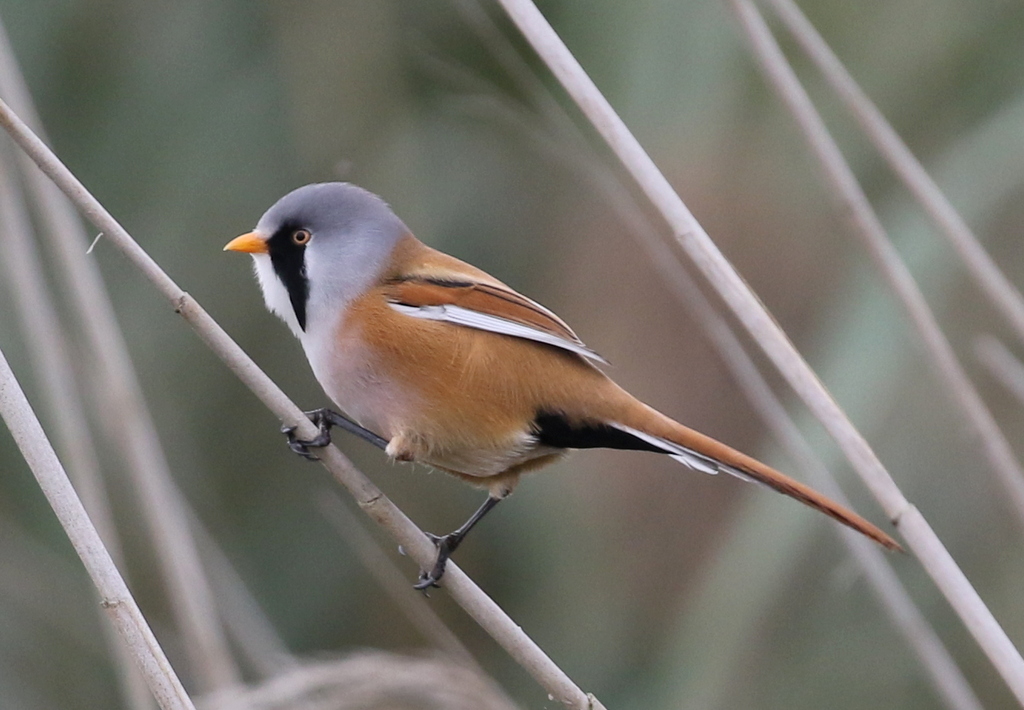
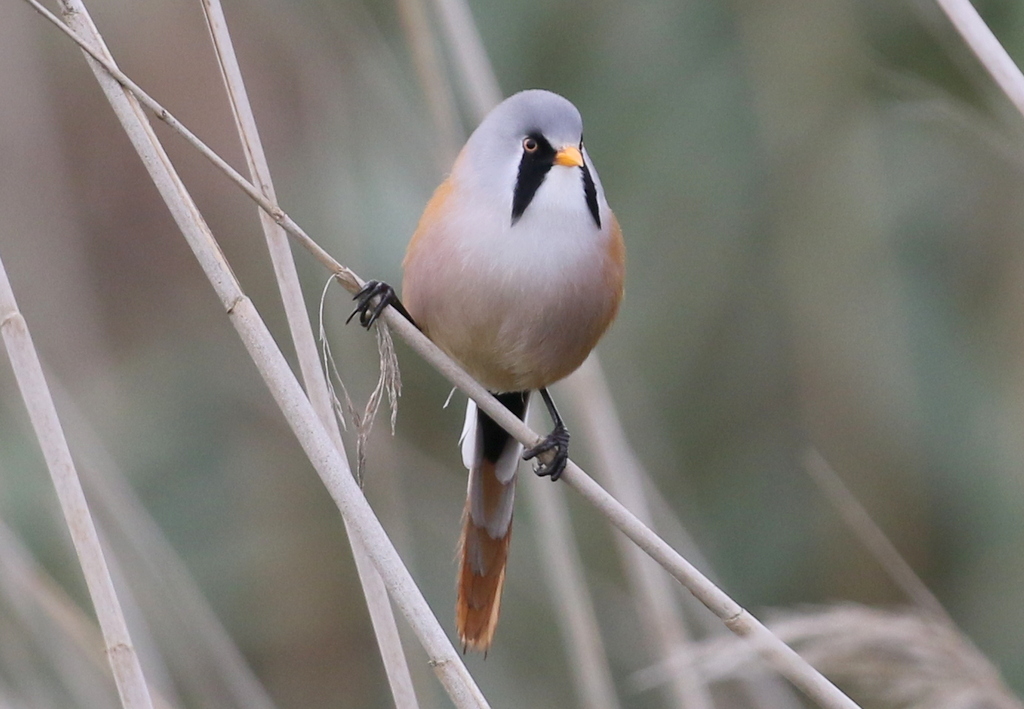 Bearded Tits – stunning views along Autumn Trail this morning
Bearded Tits – stunning views along Autumn Trail this morning
The Bearded Tits seemed totally unconcerned by our presence, and stayed perched in the top of the reeds right in front of us for several minutes, before finally deciding to fly a little further back into the reeds. It was a real treat to see them so well and for so long.
We started to make our way back. A crowd had now gathered to try to see the Ring Ouzel, so we didn’t linger. A Little Grebe laughed at us – or them – from out on Patsy’s Reedbed as we passed. A flock of Long-tailed Tits made their way quickly down along the hedge beside the path, in the opposite direction, but there was no sign of anything more interesting with them.
Making our way slowly back along Fen Trail, the sallows were still quiet. We stopped to listen by the dragonfly pools and finally heard a Yellow-browed Warbler call. It came from somewhere round on Meadow Trail, so we made our way quickly round there. Unfortunately, it didn’t call again and there was no sign of any movement in the trees, apart from a couple of Blue Tits and a few Blackbirds.
It was clear that this Yellow-browed Warbler was not going to make our lives easy, so with the morning passing quickly, we decided to head out onto the reserve. There were lots of people gathered on the main path by the former Thornham grazing marsh pool, and they told us they had seen up to 40 Bearded Tits either side of the path here. We could hear Bearded Tits calling and looked across to see a large group of at least 15 in the tops of the reeds on the Thornham side. There were more calling from the reeds behind us. It was definitely a good day for Bearded Tits!
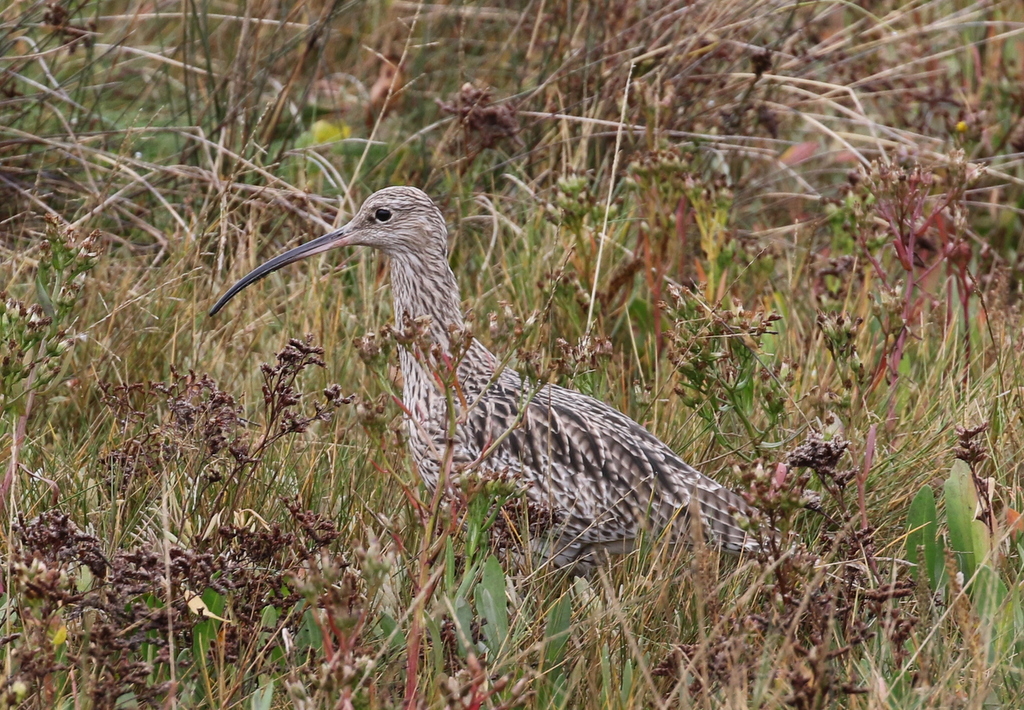 Curlew – very well camouflaged on the saltmarsh
Curlew – very well camouflaged on the saltmarsh
Continuing on our way, a smart male Marsh Harrier was quartering the reedbed. A lone Curlew was down on the near edge of the saltmarsh. It was very well-camouflaged here, among the grasses, but easier to see when it was walking round feeding.
In Island Hide, we stopped to have a look at the Freshmarsh. There were lots of waders on here, principally a very large flock of Golden Plover which had probably flown in from the stubble fields inland to bathe, preen and sleep. Behind them was a long line of Black-tailed Godwits, again mostly asleep. Scattered around the islands and edges were a good number of Ruff, both browner juveniles and paler, orange-legged adults. There were several little flocks of Dunlin too, and we finally found the second Little Stint running around on the top of one of the drier islands among all the Lapwing, looking tiny by comparison.
 Ruff – a paler winter adult, one of several on the freshmarsh
Ruff – a paler winter adult, one of several on the freshmarsh
The biggest surprise on here was when one of the group said they had found a Grey Partridge and we looked over to see a male walking out across the mud. A bizarre sight, it clearly thought it was a wader! It didn’t stay long though, and quickly realised the error of its ways and went back to the bank.
There are more ducks on the Freshmarsh now, mainly Wigeon and Teal which have returned here for the winter. A flock of Brent Geese flew in from out on the saltmarsh to bathe and preen, before heading back the way they had just come.
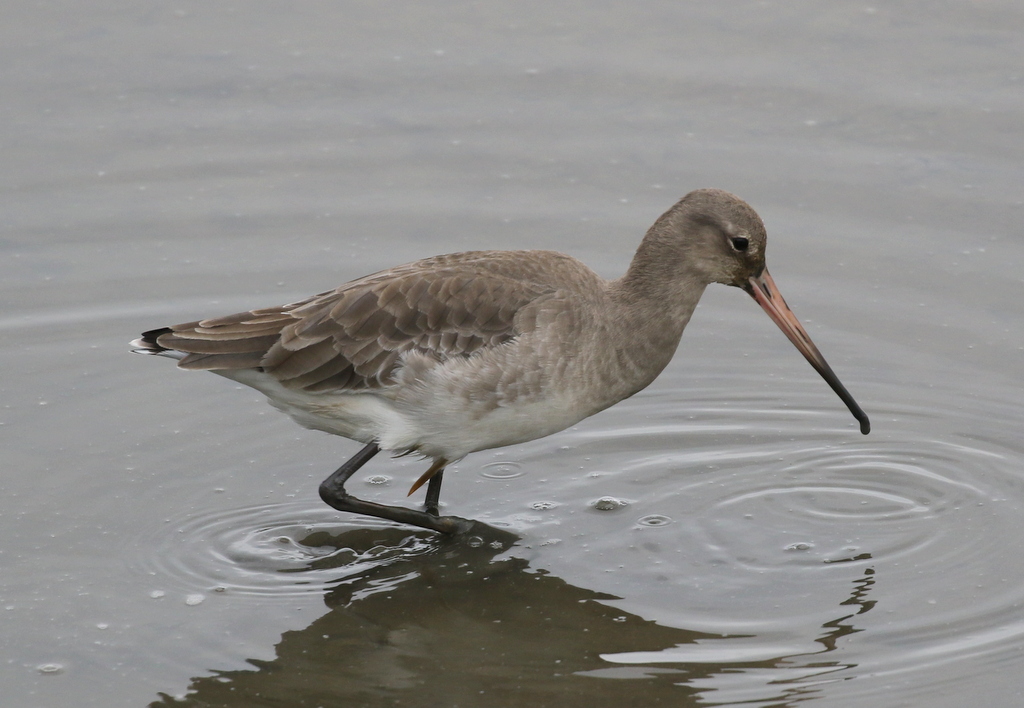 Black-tailed Godwit – feeding on the edge of the Freshmarsh
Black-tailed Godwit – feeding on the edge of the Freshmarsh
From back up on the main path, a close Black-tailed Godwit was feeding down on the mud below us. A little further along, at the start of the Volunteer Marsh, we found a single Bar-tailed Godwit too. Even though they weren’t side by side, we looked at some of the ways to tell these two species apart in non-breeding plumage.
There were also a few Common Redshank on the Volunteer Marsh and more waders along the banks of the channel at the far side. Three Grey Plover here were the most notable, all now in their grey non-breeding plumage.
 Common Redshank – the Volunteer Marsh is a good place to see them up close
Common Redshank – the Volunteer Marsh is a good place to see them up close
After the recent high tides, the Tidal Pools were full of water and most of the islands were flooded. Consequently, there were fewer birds on here than normal. We did see at least four Little Grebes which have presumably now taken up residence here for the winter.
Climbing up into the dunes, we stopped to scan the sea. The first birds we saw were three Common Scoter close inshore. A moulting drake Goldeneye was just off the beach the other side. It was pretty calm today, so many of the birds were further out. There were quite a few Great Crested Grebes offshore but the single Red-throated Diver we found was very distant.
With the tide going out now and the mussel beds starting to be exposed again, there were plenty of waders down in the beach. As well as lots of Oystercatchers and Bar-tailed Godwits, we could see a few Turnstone feeding on the mussel beds. Six Knot flew past along the beach. A few Sanderling were running in and out of the gulls along the sand away to the west.
It was time for lunch, so we started to make our way back. We were almost back to the trees, when a big tit flock came towards us, zipping between the sallows. We thought we might find something with all the tits, but despite looking carefully as they worked their way quickly past us, the best we could find was a single Chiffchaff and a couple of Goldcrests. We took a detour round via Meadow Trail, but there was no further sight nor sound of the Yellow-browed Warbler here either.
After lunch back in the picnic area, we made our way back west. We decided to head for Holkham. Several Yellow-browed Warblers had been reported here in the morning, and with the possibility of catching up with other species too, we thought it would be a good place to try.
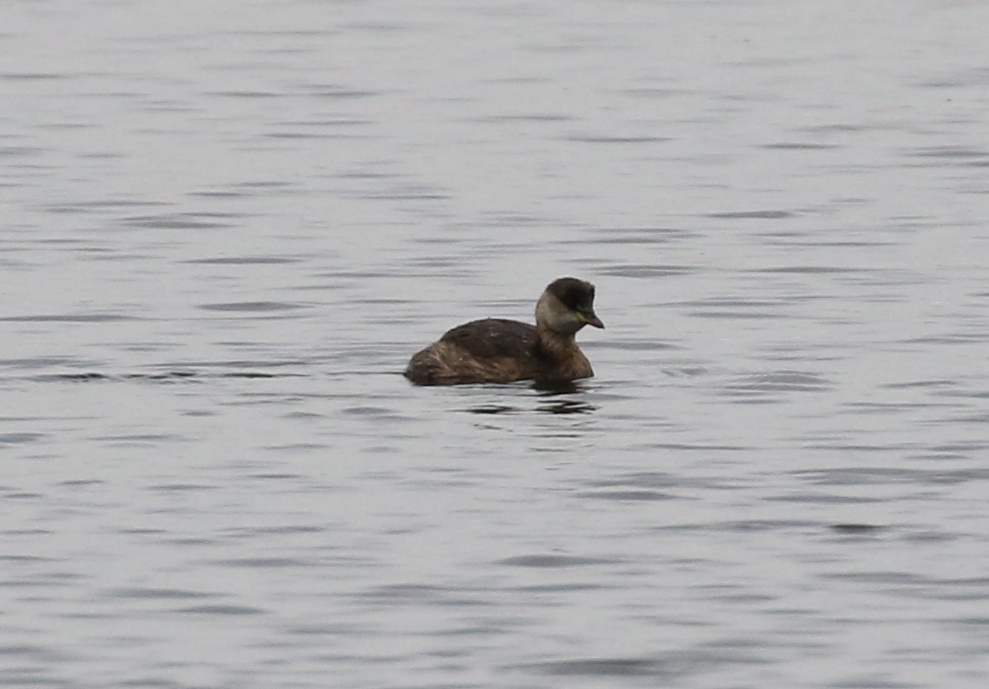 Little Grebe – one of four on Salts Hole this afternoon
Little Grebe – one of four on Salts Hole this afternoon
It was quiet at first in the trees as we made our way west on the path inland of the pines. At Salts Hole, we counted four Little Grebes. As we started to walk on, a Kingfisher flew in, did a quick circuit, landed briefly on the fence at the back, did another quick circuit and disappeared again. There were lots of Jays flying back and forth through the trees.
The sycamores by Washington Hide were empty, but a quick look out across the grazing marsh did at least produce a Common Buzzard, which was new for the weekend’s list. We got to Meals House before we finally found a tit flock. A Yellow-browed Warbler had been reported here earlier, so we thought we were in with a good chance, but the only warbler we could see with them was a single Chiffchaff. As they moved quickly through and across the path, we had a very brief view of a Firecrest in the top of a tree, before it disappeared into the pines.
We continued on to the west end of the pines, where another Yellow-browed Warbler had been reported. When we got there, we could hear Long-tailed Tits deep in the trees. At first we couldn’t tell where they were headed, but after walking back a short way along the path and then up again, we ran into them just as we got back to the west end. Just as we arrived, we heard a Yellow-browed Warbler calling and saw it drop out of the pines, across the path, and into the sallows.
The Yellow-browed Warbler was calling constantly, but it was hard to see deep in the sallows at first. Slowly, it worked its way towards us and we could see it flitting around among the branches. It appeared on the edge briefly, before disappearing back in. Then it reappeared in the top of an ivy-covered tree in full view, but only for a second. Eventually everyone got a look at it, although often it was a matter of only seeing bits of it at a time between the leaves and building up a ‘composite’ view!
After disappearing back into the sallows, the tit flock started to make its way back across the path and the Yellow-browed Warbler eventually followed. We could see it flitting around high in the pines for a while, before it disappeared back into the trees. Although the tit flock came back out of the pines pretty quickly and dropped back into the trees along the edge, we couldn’t find the Yellow-browed Warbler again and it had stopped calling. It was time for us to start making our way back.
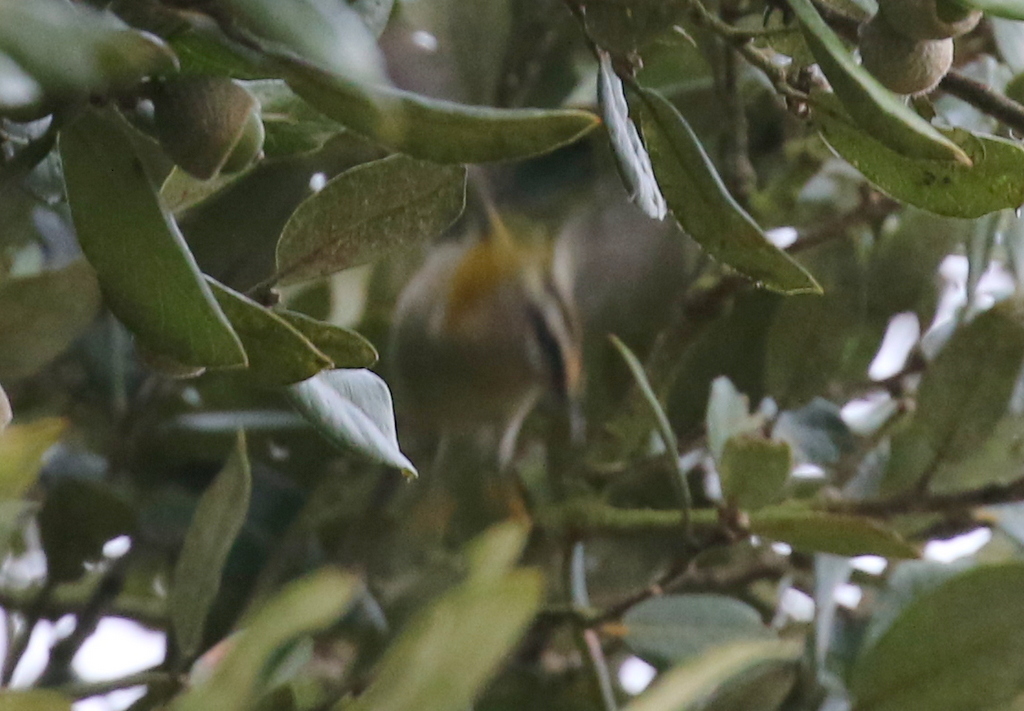 Firecrest – a very blurred shot, the best we could manage, with the light fading!
Firecrest – a very blurred shot, the best we could manage, with the light fading!
As we passed Meals House, the tit flock here was back out of the pines and feeding in the birches south of the track. We stopped to look through them. While we were looking, we heard the Firecrest calling from the holm oak right behind us. It was not much easier to see than the Yellow-browed Warbler had been, particularly with the light fading now. Eventually, everyone got a look at it when it came out onto the edge of the tree, before being chased off by a Goldcrest.
Then it was time to head for home. It had been a great couple of days with some memorable birds, a typical Norfolk autumn weekend!




